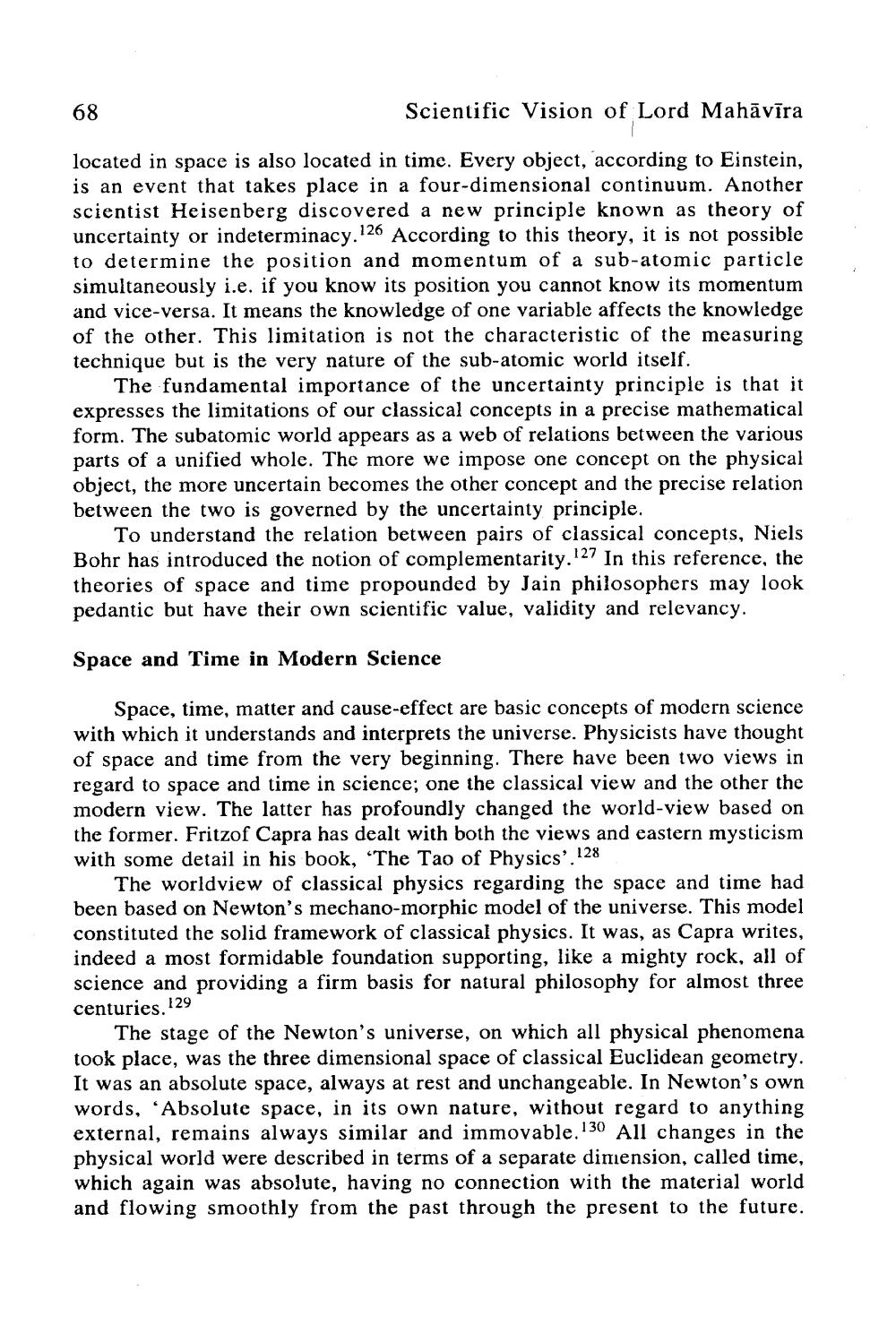________________
68
Scientific Vision of Lord Mahāvīra
located in space is also located in time. Every object, according to Einstein, is an event that takes place in a four-dimensional continuum. Another scientist Heisenberg discovered a new principle known as theory of uncertainty or indeterminacy. 126 According to this theory, it is not possible to determine the position and momentum of a sub-atomic particle simultaneously i.e. if you know its position you cannot know its momentum and vice-versa. It means the knowledge of one variable affects the knowledge of the other. This limitation is not the characteristic of the measuring technique but is the very nature of the sub-atomic world itself.
The fundamental importance of the uncertainty principle is that it expresses the limitations of our classical concepts in a precise mathematical form. The subatomic world appears as a web of relations between the various parts of a unified whole. The more we impose one concept on the physical object, the more uncertain becomes the other concept and the precise relation between the two is governed by the uncertainty principle.
To understand the relation between pairs of classical concepts, Niels Bohr has introduced the notion of complementarity. 127 In this reference, the theories of space and time propounded by Jain philosophers may look pedantic but have their own scientific value, validity and relevancy.
Space and Time in Modern Science
Space, time, matter and cause-effect are basic concepts of modern science with which it understands and interprets the universe. Physicists have thought of space and time from the very beginning. There have been two views in regard to space and time in science; one the classical view and the other the modern view. The latter has profoundly changed the world-view based on the former. Fritzof Capra has dealt with both the views and eastern mysticism with some detail in his book, "The Tao of Physics’. 128
The worldview of classical physics regarding the space and time had been based on Newton's mechano-morphic model of the universe. This model constituted the solid framework of classical physics. It was, as Capra writes, indeed a most formidable foundation supporting, like a mighty rock, all of science and providing a firm basis for natural philosophy for almost three centuries. 129
The stage of the Newton's universe, on which all physical phenomena took place, was the three dimensional space of classical Euclidean geometry. It was an absolute space, always at rest and unchangeable. In Newton's own words, 'Absolute space, in its own nature, without regard to anything external, remains always similar and immovable. 130 All changes in the physical world were described in terms of a separate diniension, called time, which again was absolute, having no connection with the material world and flowing smoothly from the past through the present to the future.




